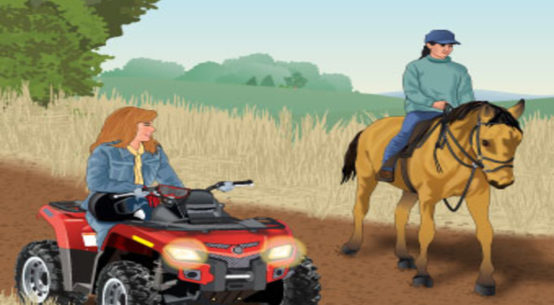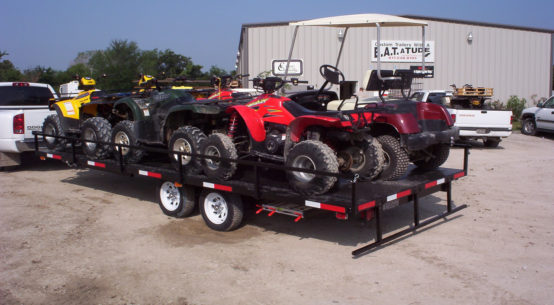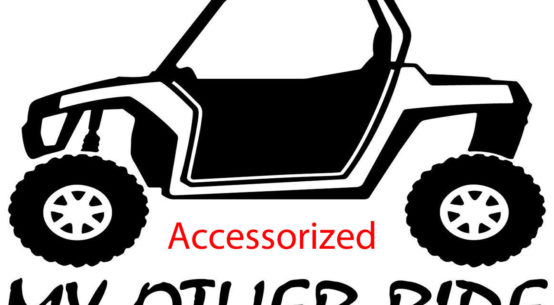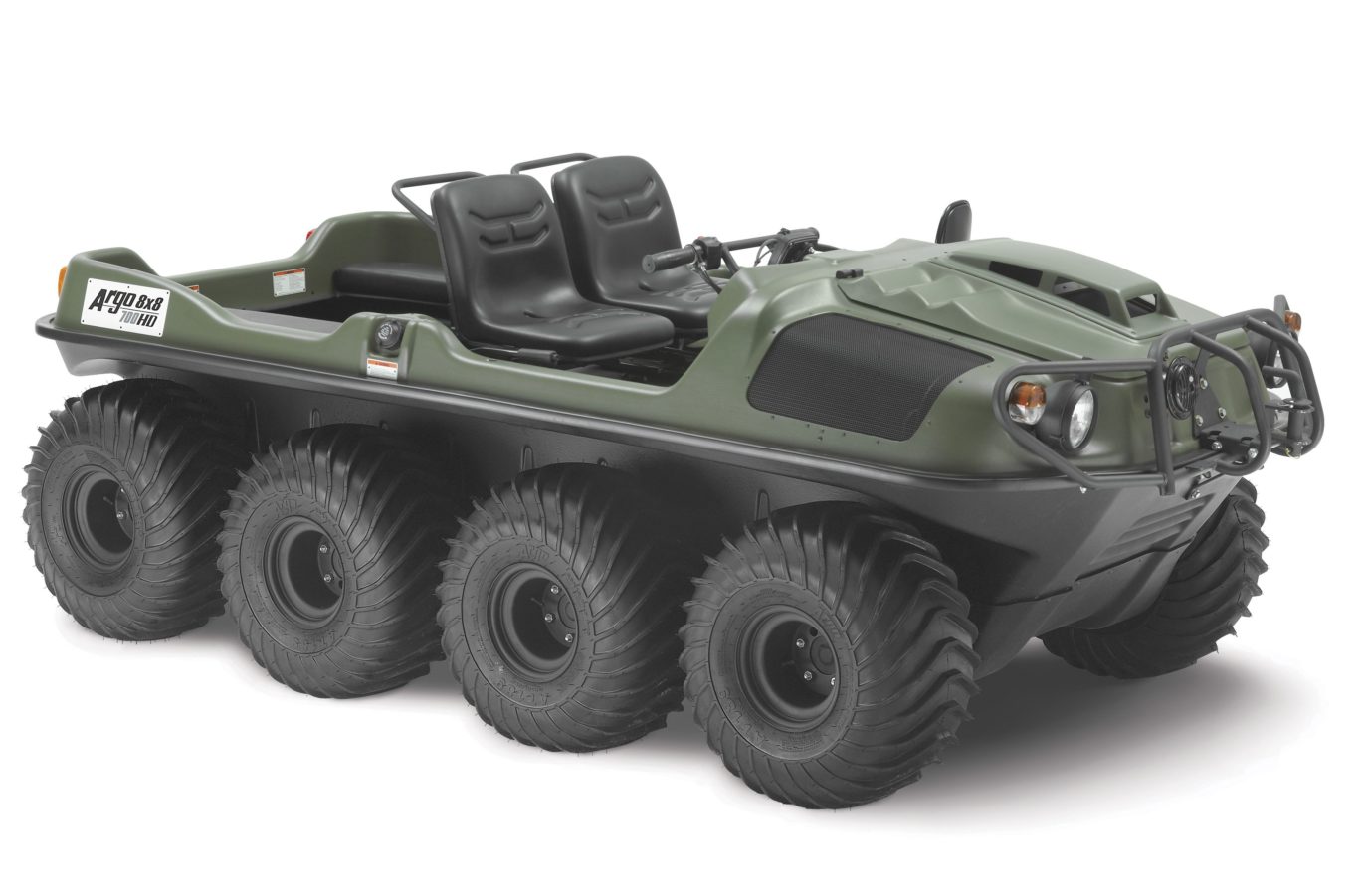
Only a few of us would remember the days before the ATV revolution. Those were the days when motorcycles reigned king of the road and off the road. A growing and enthusiastic motorized outdoor culture existed then also. It was the zenith of the day for Amphibian machines. There were dozens of manufacturers of amphibious OHV craft, even Sears had one in their infamous catalog. In just a short time, a season or two, after the introduction of Honda’s first three wheel ATV the sun set on the Amphibian culture in the US. The ATVs offered a cheap solution, under a thousand dollars, to get out of the house and enjoy the great outdoors. The much more costly Amphibians were similar in price to that of a small car. Much more difficult to justify during the era of the rapid inflation of the early 80’s.
Years passed and one by one the competition has fallen to the effects of the loss of enthusiasm for the motorized amphibious vehicles. There remains one manufacturer of Amphibians sold in the US. These are known as an “Argo.”
It looks as though the tide has turned (finally) for the Amphibians based on economics and the aging baby boomer population. A resurgence of popularity may well be on the horizon.
Bottom Line Advantage
ATV manufacturers have continued to test the outside envelope of what the market will bear when it comes to individual ATVs. It is now difficult to buy one for under $5,000. Admittedly there are many models available, but the ones that the sales people will lead you to at the showroom will all be over $5K, I promise.
Now, consider the fact that the ATV industry has restrained themselves from making ATVs that would permit use by a passenger. In logical terms, any family getting into the sport of ATV will do so with buying at least two machines. If not up front, it will not likely be more than a year before the second machine makes it arrival. One ATV is like having one roller blade. You really need the second to have any fun.
The investment you will make to get into the ATV sport will likely be at least $10,000 once you accessorize, even if you don’t go for a middle of the line model ATV. (not to mention the trailer)
If you are investing $10,000 for OHV recreation you may be interested to know that the entry point for a 6×6 Amphibian is now just $7,000. Three thousand dollars in saving is enough to catch anyone’s eye.
Please note that the entry model is $7,000. The typical Amphibian vehicle buyer will buy a middle of the line product to start with. These models run about $10,000. If you compare to a jeep you are still thousands ahead. You can get carried away and get every accessory added to the top end machine and you will look at a price tag of near twenty two thousand dollars. Now that is a chunk of change. Rarely are these fully outfitted configurations purchased by individuals. However, they are a popular solution for professional services, such as guide services and corporate retreat uses.
You can expect to pay property tax and OHV license fees each year. These will be considerably higher than an ATV, but considerably lower than a jeep.
Here are some of the features that the Amphibious vehicles offer:
- Their multiple wheels spread out the weight distribution so that a machine can traverse sensitive terrain with less than two pounds per square inch. The average human foot bears 10 pounds per inch, in comparison. Therefore, as far as the environment is concerned, this machine is more earth friendly than a booted human adult. The US Forest Service doesn’t see it quite the same way yet.
- Water hazards need not be a major deterrent. These machines can offer transportation across a lake or stream without serious challenge.
- An amphibian can carry heavier loads and tow heavier trailers, up to twenty-five hundred pounds with hardly a hesitation. A comparison test during the Rocky Mountain ATV Jamboree in 2001 demonstrated that there is literally no competition with an ATV in the ability of the Argo to go through a mud bog and pull a heavy load. The Argo simply skimmed along the surface of the mud like it was a water skeeter, while the ATVs went in up to the rider’s eyeballs.
- Multiple seating capacity. Even the smaller 6×6 versions of the Argo amphibious machine permit seating of 4 people. The larger 8×8 models permit 6 adults. This number can safely increase if the passengers are children.
- The center of gravity on these machines is a mere ten inches off the ground according to the local dealership. They have a stance over a foot wider than most ATVs and they have a greater weight. The combination of these factors makes it easy to understand that these vehicles are very difficult to accidentally turn over, which is one of the greatest hazards when it comes to ATVs. You wouldn’t dismiss the possibility of a roll over altogether, but it is nice to have the principles of physics working in your favor.
- Given the size you might well expect the Argo to have the roar of a mountain lion. Not so. Its 4 stroke engine, ranging in size from 470cc to 620cc. purrs like a kitty. With its normally slow speeds it is not difficult to come up on game without their being spooked off.
Differences
An amphibian / Argo has several differences to offer. It is a wheeled vehicle and by virtue of the wheels it is considered by some state agencies to be an ATV. However, the similarity almost stops there.
- This is a vehicle that you ride in, rather than on. It is easier to consider that aspect of the vehicle more similar to a jeep rather than an ATV.
- In most instances, it is not required to wear a helmet when riding an Amphibian. But this is not true an any OHV specific area, such as the Little Sahara Sand Dunes or the Coral Pink Sand Dunes, where helmets are required for all off road vehicles including jeeps, ATVs, motorcycles and amphibians.
- If you are looking for a high speed ride down long dirt roads, you may be frustrated by the limited speed an amphibian will offer. These machines will go at top speed for up to 8 hours without a second thought. Top speed for most models is 22 MPH.
- If speed is important to you, this is not the machine to consider. It is as simple as that. You will not be breaking air with an amphibian, they have no celestial tendencies. They have no aerial features what so ever.
- Steering is done by the use of two levers. By pulling back on one lever it slows all the wheels on one side of the machine while the wheels on the other side of the machine continue at the same speed. This is the same technology used by tanks.
- Braking is also controlled by both levers. In fact, when turning you are actually braking. To stop the machine you simply pull back on both levers simultaneously. The brakes are actually disk brakes at each side of the engine which drives the wheels by use of a double chain technology. This is hard to describe, but easy to understand once you see it.
- There are no foot pedals to work with at all. The throttle is a twist grip on the right lever.
- As the name amphibian implies it has more than one venue of operation. In fact I believe that is it likely to be more flexible than a standard ATV in the applications for use. It will offer equal features of use on hard ground as it does on snow. With the addition of a track an Argo can go in very deep powder with no hesitation. Thus this offers the features of a snowmobile, a water craft, and an ATV. Here again, only if speed is not a consuming desirable feature.
- The Argo amphibian exceeds other OHV characteristics by offering a heater and fully enclosable convertible top.
- The Argo makes a perfect platform for search and rescue / retrieval in remote areas. These can be fitted to include a custom designed stretcher platform.
Argo as a boat
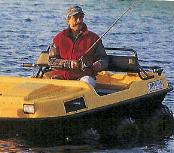 Aquatic uses require the aid of a personal flotation device for all participants in the Argo. Use on any lake will also require that you register your machine as a boat. The fee is only $12.50 a year, thankfully. You may attach an outboard motor to the back of the Argo, but you will never plain the machine as you would a boat. It will always be a displacement craft. Without the outboard the machine has a top speed under 3 MPH. A machine such as this may be used in a location such as Strawberry Reservoir, but experience in small boats has taught me that you never want to be out on a large lake when the wind comes up and white caps are on the lake. The Argo will get you to some of those high Uinta lakes with no problem, just be sure that the fishing proclamation has not restricted motorized use on any such water. Unfortunately you will discover that most lakes in the Uinta’s have such restrictions, but not all.
Aquatic uses require the aid of a personal flotation device for all participants in the Argo. Use on any lake will also require that you register your machine as a boat. The fee is only $12.50 a year, thankfully. You may attach an outboard motor to the back of the Argo, but you will never plain the machine as you would a boat. It will always be a displacement craft. Without the outboard the machine has a top speed under 3 MPH. A machine such as this may be used in a location such as Strawberry Reservoir, but experience in small boats has taught me that you never want to be out on a large lake when the wind comes up and white caps are on the lake. The Argo will get you to some of those high Uinta lakes with no problem, just be sure that the fishing proclamation has not restricted motorized use on any such water. Unfortunately you will discover that most lakes in the Uinta’s have such restrictions, but not all.
Argo as a snowmobile
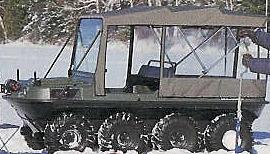 When fitted for snow tracks the Argo will traverse the same terrain that any snowmobile will travel. The only possible exception would be the steep walls of bowls or other areas where speed is the primary factor in achieving access to a particular height. The primary difference here is that you will not have the quick speeds that Snowmobiles offer. If that is not a concern then you may enjoy the Argo. You can also add a heater and enclose the driver and passengers making the Argo an enjoyable ride for the most part. Without a snow track the Argo would do well on any groomed surface, but don’t get too far off the beaten path.
When fitted for snow tracks the Argo will traverse the same terrain that any snowmobile will travel. The only possible exception would be the steep walls of bowls or other areas where speed is the primary factor in achieving access to a particular height. The primary difference here is that you will not have the quick speeds that Snowmobiles offer. If that is not a concern then you may enjoy the Argo. You can also add a heater and enclose the driver and passengers making the Argo an enjoyable ride for the most part. Without a snow track the Argo would do well on any groomed surface, but don’t get too far off the beaten path.
Argo as a Jeep
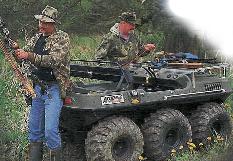 While completely capable of off road use, if you are thinking that an Argo would be a good replacement for a jeep you may be disappointed due to the limitation of maximum speed for the machine of 22 MPH. Obviously long distances on well graded surfaces would tend to get boring after a while. At the point that you would shove your jeep into 4WD and lock the hubs the Argo would become a full-fledged competitor to the jeep.
While completely capable of off road use, if you are thinking that an Argo would be a good replacement for a jeep you may be disappointed due to the limitation of maximum speed for the machine of 22 MPH. Obviously long distances on well graded surfaces would tend to get boring after a while. At the point that you would shove your jeep into 4WD and lock the hubs the Argo would become a full-fledged competitor to the jeep.
Argo as an ATV
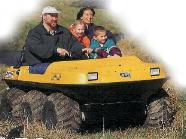 The only limitations you will find on use in the outdoors will be that an Argo at 57″ wide will not be permitted the use of trails that have a 50″ width limitation. This would include any trail that is restricted to ATV or single track vehicles. These trails are few and far between, but they do exist. Of course, any use of the Argo must be in compliance with the existing travel plan and all published and posted restrictions. At no time is an Argo permitted off a trail in areas where OHV use is limited to existing roads and trails.
The only limitations you will find on use in the outdoors will be that an Argo at 57″ wide will not be permitted the use of trails that have a 50″ width limitation. This would include any trail that is restricted to ATV or single track vehicles. These trails are few and far between, but they do exist. Of course, any use of the Argo must be in compliance with the existing travel plan and all published and posted restrictions. At no time is an Argo permitted off a trail in areas where OHV use is limited to existing roads and trails.
If you average 10 miles per hour your fuel tank will generally last a bit longer than if you ride at full throttle at all times. The manufacturer gives you 22 miles per hour at top speed so that would be a range of about two hundred twenty miles. If you go slower you will be able to run for longer periods, but you will likely still have a somewhat similar range.
Argo’s likely customers:
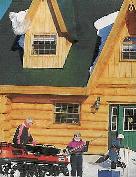 Not everyone is going to be in love with an amphibian like the Argo. That will be just fine. If you are looking for an identical experience to an ATV or a snowmobile in an Argo you will be disappointed and frustrated. However if you are interested in slower speeds and a more interactive opportunity with passengers this machine may be ideal for you and your family. The likely target market for this machine is the over forty five year old group. They would also serve those with handicaps quite well.
Not everyone is going to be in love with an amphibian like the Argo. That will be just fine. If you are looking for an identical experience to an ATV or a snowmobile in an Argo you will be disappointed and frustrated. However if you are interested in slower speeds and a more interactive opportunity with passengers this machine may be ideal for you and your family. The likely target market for this machine is the over forty five year old group. They would also serve those with handicaps quite well.
If you have a back woods cabin and need to transport your whole family in a single trip, the Argo may be for you.
The Argo remains a favorite of Search and Rescue teams throughout the US and Canada.
You are likely to notice that the sales approach with an Argo is different than with an ATV. Rather than showing you the most expensive model first, you will be shown the least expensive model and then you will talk yourself up to the other models based on your particular needs. It is a refreshing change.
The 6 models of Argo are built by Ontario Driving Gear Ltd in Canada. Check out their promotional video below or visit their site at Argo XTV.

